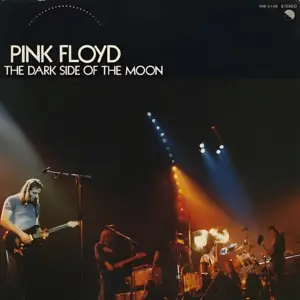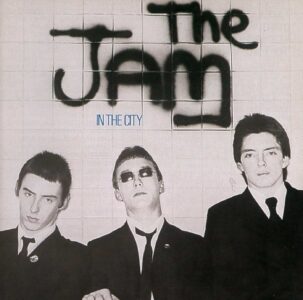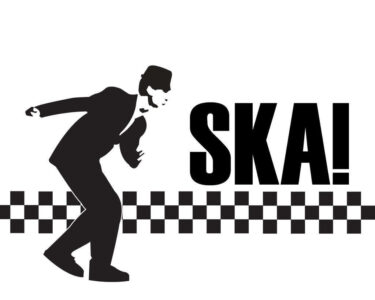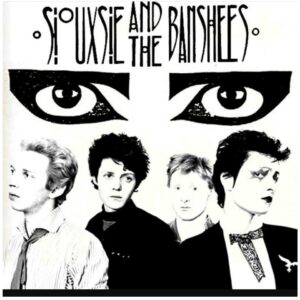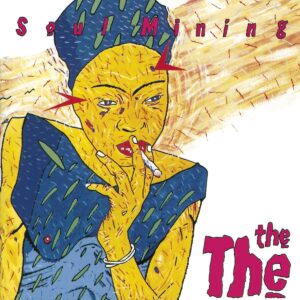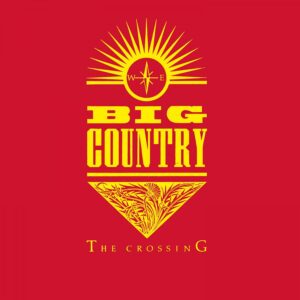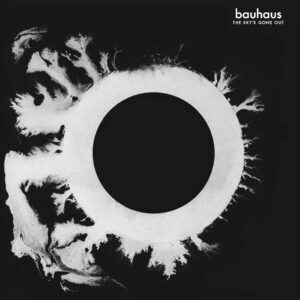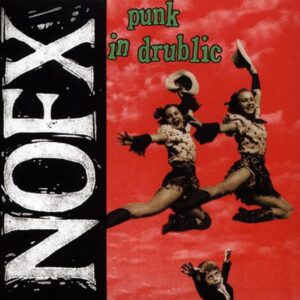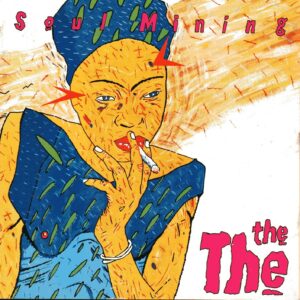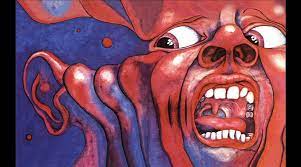Exploring Audio Sources: From Vinyl to Streaming
Simply put, a HiFi source is any device that is responsible for providing the audio signal to your HiFi system. This can include things like CD players, turntables, streaming devices, and more.
So why do HiFi sources matter? Well, the quality of the source can have a huge impact on the overall sound quality of your HiFi system. A low-quality source can introduce distortion, noise, and other artifacts that can detract from the listening experience. On the other hand, a high-quality source can provide a clean, detailed, and accurate signal that allows your HiFi system to truly shine.
Now, let’s talk about some different types of HiFi sources and what to look for when choosing one.
First up, let’s talk about CD players. While physical media like CDs may seem outdated in the age of streaming, they can still provide excellent sound quality when played through a high-quality CD player. When choosing a CD player, look for one that has a high-quality digital-to-analog converter (DAC), as this will have a big impact on the sound quality. Additionally, make sure the CD player is built with high-quality components and has a low noise floor to minimize any distortion or noise.
Next, let’s talk about turntables. Vinyl records have seen a resurgence in popularity in recent years, and for good reason – they can provide a warm, rich, and detailed sound that digital formats can’t always match. When choosing a turntable, look for one that has a high-quality tonearm, cartridge, and platter, as these components will have a big impact on the sound quality. Additionally, make sure the turntable has a low wow and flutter measurement, which refers to the amount of speed variation in the turntable’s rotation.
Streaming devices are another popular HiFi source. These devices allow you to stream music from services like Tidal, Spotify, or your own personal music library. When choosing a streaming device, look for one that supports high-resolution audio formats like FLAC or DSD, as these will provide the best sound quality. Additionally, make sure the device has a high-quality DAC and a low noise floor to minimize any distortion or noise.
Finally, let’s talk about computer-based audio. Many people use their computer as a source for their HiFi system, whether that’s by playing music files directly from their computer or using a USB DAC. When using a computer as a source, make sure you have a high-quality DAC and a low noise floor to minimize any distortion or noise. Additionally, consider using a software player like Roon or JRiver to optimize the sound quality and ensure bit-perfect playback.
In conclusion, the quality of your HiFi source can have a huge impact on the overall sound quality of your HiFi system. Whether you’re using a CD player, turntable, streaming device, or computer-based audio, make sure you choose a source that has high-quality components, a low noise floor, and supports high-resolution audio formats. Happy listening!
Digital audio formats
Digital audio formats are the different ways in which audio data is stored and compressed in digital form. There are several different digital audio formats available, each with its own advantages and disadvantages.
One of the most common digital audio formats is MP3. MP3 is a lossy audio format, which means that it compresses audio data by removing some of the information that is deemed less important to human hearing. This compression allows MP3 files to be smaller in size, which makes them easy to share and download. However, this compression can also result in a loss of audio quality, particularly in areas like high frequencies and dynamic range.
Another popular digital audio format is FLAC (Free Lossless Audio Codec). Unlike MP3, FLAC is a lossless audio format, which means that it compresses audio data without removing any information. This compression allows FLAC files to be smaller in size than uncompressed audio files, but without any loss of audio quality. FLAC is often used for archiving and distributing high-quality audio files.
WAV (Waveform Audio File Format) is another common digital audio format. WAV is an uncompressed audio format, which means that it does not compress audio data in any way. This makes WAV files much larger than other digital audio formats, but also means that they are of higher quality and have more detail. WAV files are often used in professional audio applications where high-quality audio is required.
Other digital audio formats include AAC (Advanced Audio Coding), which is a lossy format similar to MP3 but with improved audio quality, and OGG, which is a lossy format designed to offer better audio quality at lower bitrates than MP3.
When choosing a digital audio format, it’s important to consider your specific needs and use case. If you’re looking for a format that can be easily shared and downloaded, MP3 might be a good choice. If you’re looking for high-quality audio without any loss of quality, FLAC or WAV might be a better choice. And if you’re looking for a format that offers a good balance between audio quality and file size, AAC or OGG might be a good choice.
Vinyl audio sources
Vinyl audio sources are one of the oldest and most beloved ways to enjoy music. Vinyl records were the primary audio source for music lovers for many years, and despite the advent of digital music, they continue to be a popular choice for many audiophiles today.
Vinyl audio sources typically consist of a turntable, a tonearm, a cartridge, and a stylus (also known as a needle). The turntable is the base on which the record sits, and it rotates the record at a constant speed while the stylus moves along the grooves of the record, translating the physical vibrations of the grooves into an electrical signal that can be amplified and played through speakers or headphones.
One of the unique features of vinyl records is that they offer an analog audio experience, meaning that the sound waves are stored in a continuous, physical form on the record. This can result in a warmer, richer, and more natural sound than digital formats. However, the quality of the sound can also be affected by several factors, including the quality of the turntable, cartridge, and stylus, as well as the quality of the recording itself.
When it comes to choosing a vinyl audio source, there are several factors to consider. First, it’s important to choose a high-quality turntable that is built with high-quality materials and components, such as a sturdy platter and tonearm, a well-designed motor, and a good anti-vibration system. Look for turntables that have adjustable speed and pitch control, as this can help to ensure that the record plays at the correct speed and with the correct pitch.
Another important factor to consider is the quality of the cartridge and stylus. The cartridge is the component that holds the stylus and translates the physical vibrations of the grooves into an electrical signal. Look for cartridges that are well-designed and built with high-quality materials, and consider investing in a high-quality stylus, which can greatly improve the sound quality.
Finally, it’s important to consider the quality of the recording itself. Vinyl records can offer a warm, natural sound, but the quality of the recording can greatly impact the sound quality. Look for vinyl records that are well-mastered and pressed on high-quality vinyl, and avoid records that are poorly mastered or pressed on lower-quality vinyl.
In conclusion, vinyl audio sources can offer a unique and rewarding listening experience, but the quality of the sound can be greatly affected by several factors, including the quality of the turntable, cartridge, stylus, and recording itself. When choosing a vinyl audio source, look for high-quality components that are designed to deliver the best possible sound quality, and take the time to find well-mastered and well-pressed vinyl records that can truly showcase the strengths of the format.
Major streaming sources
There are several major streaming sources available today, each offering a vast library of music and audio content for listeners to enjoy. Here are some of the most popular streaming sources:
Spotify
Spotify is one of the largest music streaming services in the world, with over 345 million monthly active users. It offers a vast library of over 70 million songs, as well as podcasts, audiobooks, and other audio content. Users can access Spotify on a variety of devices, including smartphones, tablets, computers, and smart speakers.
Apple Music
Apple Music is another popular music streaming service, with over 60 million subscribers. It offers a library of over 75 million songs, as well as curated playlists, radio stations, and exclusive content. Apple Music is available on a variety of devices, including iPhones, iPads, Apple Watches, and Apple TVs.
Tidal
Tidal is a music streaming service that is focused on high-quality audio, offering lossless audio and high-resolution audio formats. It has a library of over 70 million songs, as well as music videos, documentaries, and other content. Tidal is available on a variety of devices, including smartphones, tablets, and computers.
Amazon Music
Amazon Music is a music streaming service that is included with Amazon Prime membership. It offers a library of over 75 million songs, as well as curated playlists, radio stations, and exclusive content. Amazon Music is available on a variety of devices, including smartphones, tablets, computers, and Amazon Echo devices.
YouTube Music
YouTube Music is a music streaming service that offers a vast library of songs and music videos, as well as personalized playlists and recommendations. It is available on a variety of devices, including smartphones, tablets, and computers, and it can also be accessed through the YouTube app on smart TVs and streaming devices.
-

Dark Side of the Rainbow. The Connection Between “The Dark Side of the Moon” and “The Wizard of Oz”
-

5 Reasons “Dark Side of the Moon” Remains a Timeless Classic5 Reasons “Dark Side of the Moon” Remains a Timeless Classic5 Reasons “Dark Side of the Moon” Remains a Timeless Classic
-

10 Reasons Why Elbow Is the Band You Need to Be Listening To Right Now
-

Big Black’s “Songs About Fucking”: An Uncompromising Blast of Raw Noise
-

The Evolution of Art Rock: A Dive into Its History, Artists, and Influence
-

The Vibrant World of Psychedelic Rock
-

Krautrock: The Evolution of a Genre
-

Joy Division’s “Atmosphere”: Unraveling the Depths
-

Unveiling “The End”: Exploring the Depths of The Doors’ Legendary Track
-

7 Sensational Glam Rock Bands: Unveiling the Sparkling Era of Musical Extravaganza
-

Unveiling the Mystique: 5 Essential Albums by The Doors
-

Velvet Reflections: Unveiling the Enigmatic Tapestry of The Velvet Underground and Nico
-

The Jam: Reviving Mod Rock – A Nostalgic Trip Through 80s Anthems
-

10 Mesmerizing Psychedelic Rock Albums: Exploring the Mind-Bending Realm of Musical Psychedelia
-

The Heartfelt Rhythm: Exploring Tom Waits’ Heart of Saturday Night
-

The History of Soul-Stirring Ska in 16 Essential Tracks
-

The Legendary Journey of Pink Floyd: Exploring Their Iconic Soundscapes
-

Ethereal Exploration: Unveiling the Mesmerizing World of David Bowie’s 1971 ‘Hunky Dory’
-
Midnight Musings: Unveiling the Enigmatic “Nighthawks at the Diner” Saga
-

Daughter: The Soulful Echo of Indie Rock – A Comprehensive Guide
-

Genesis: An Enthralling Journey Through Prog Rock’s Hallmark – 7 Essential Insights
-

Unveiling the Soul: 9 Emotive Tracks from “Pleased to Meet You” by James
-

Rebel Sounds: Unearthing 20 Essential Post-Punk Tracks That Redefined Music
-

The Pixies: Resilient Rock Pioneers Redefining Sound
-

Post-Punk Bands: 20 Dynamic British Acts That Shaped an Era of Musical Rebellion
-

Siouxsie and the Banshees – Pioneers of Gothic Rock Sensation
-

The Cure: Exploring the Depths of Melancholy and Melody
-

The Birthday Party: A Wild Journey Through 3 Decades of Sonic Mayhem
-

Pale Green Ghosts: The Emotional Journey of an Album – 5 Key Insights
-

The Stooges: 5 Explosive Albums That Redefined Rock and Birthed a Revolution
-

Definitely Maybe: A Rock and Roll Revolution
-

Third Uncle. Unearthing Brian Eno’s Bold Experimental Masterpiece
-

Soul Mining: Navigating the Depths of Existentialism, Urban Disillusionment, and Love in The The’s 1983 Masterpiece
-

Exploring “Mind Bomb” by The The: A Musical Revolution
-

Big Country: Pioneers of 80’s Celtic Rock
-

The Anti-Nowhere League: Punks With a Purpose
-

The Evolution of Joy Division’s “Love Will Tear Us Apart”: A Journey Through Loss and Emotion
-

Exploring “The Sky’s Gone Out”: A Deep Dive into Bauhaus’ Iconic 1982 Album
-

The Jesus and Mary Chain: 5 Albums of Melodic Noise
-

The Police’s “Synchronicity”: A Journey through Musical Brilliance
-

The Police: Rock Legends and Their Top 5 Albums
-

If I Should Fall from Grace with God: A Musical Journey through Pogues’ Masterpiece
-

Rum, Sodomy and the Lash: The Definitive Story of an Iconic Album
-

Unveiling the Genesis of a Classic: “Invisible Touch” Album
-

The Stone Roses: A Defining 1989 Masterpiece of British Rock
-

The MC5: Revolutionizing Rock ‘n’ Roll – A Journey through History, Music, and Legacy
-

The Velvet Underground: Pioneers of Experimental Rock
-

Punk in Drublic: The Defining Album of 90s Punk Rock
-

Soul Mining: Unearthing the Depths of Musical Genius
-

Public Image Limited: Unraveling the Sonic Revolution of Post-Punk with PiL
-

The Roaring Rebellion: Exploring the Explosive World of Noise Punk
-

The Pogues: A Celtic Punk Legacy in 5 Great Tracks
-

The New Model Army Saga: Unleashing the Power of Small Town England
-

The Unique Journey of Tom Waits: A Musical Odyssey
-

101 Damnations: Carter USM’s Pioneering Debut Album
-

Unraveling the Punk Revolution: Exploring 9 Major Punk Subgenres
-

Dead Kennedys: Punk Pioneers of Rebellion
-

The Evolution of Punk: A Raw and Rebellious Musical Revolution
-

Exploring the Depths of Nick Cave: His Music, Journey, and Legacy
-

Carter USM: 7 Essential Albums That Defined an Era
-

Kiss Me, Kiss Me, Kiss Me: From The Heart to The Soul
-

Shoegaze: A Sonic Odyssey Through Ethereal Soundscapes
-

5 Intriguing Aspects of “Unknown Pleasures” by Joy Division
-

The New Wave of Music: A Journey Through Innovation
-

Exploring Post-Punk: The Evolution of a Musical Revolution
-

7 Fascinating Insights into Joy Division’s ‘Closer’ Album
-

Unveiling the Mysterious World of Joy Division: A Journey Through Their Iconic Music
-

King Crimson: Unveiling the Enigmatic Evolution of Progressive Rock
-

Bauhaus: Unmasking the Gothic Pioneers of Post-Punk
-

Unveiling the Extraordinary Journey of John Grant: A Musical Odyssey
-

The Butthole Surfers. Exploring the Psychedelic Chaos
-

The Epic Evolution of Prog Rock: A Journey Through Soundscapes
-

Roxy Music: Glamour, Innovation, and Musical Evolution
-

Unveiling the Enigma of Goth Rock: A Journey Through History, Soundscapes, and Influential Artists


